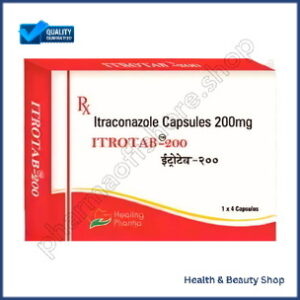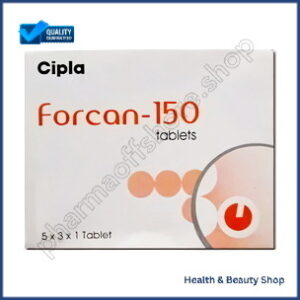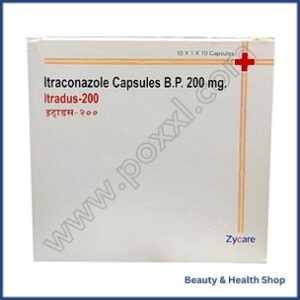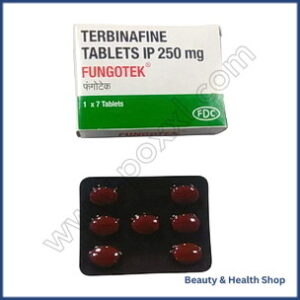ADDICTION
ALCOHOL DEPENDENCE
QUIT SMOKING
ALLERGY
ANTI FUNGAL
FUNGAL INFECTION
FUNGAL NAIL INFECTIONS
ANTI-REJECTION DRUGS
ANTI WORM
ANTIBIOTIC
BACTERIAL INFECTIONS
ARTHRITIS
GOUT
OSTEOARTHRITIS
RHEUMATOID ARTHRITIS
BLOOD
LOW PLATELET COUNT
THROMBOPHLEBITIS
VARICOSE VEINS
COLON
ANAL FISSURE
PILES
ULCERATIVE COLITIS
DIABETES CARE
DIABETES INSIPIDUS
DIABETES TYPE
DIABETIC FOOT ULCERS
GLUCOSE MONITOR
EYES/EAR CARE
DRY EYES
EYE CARE
EYE EXAMINATION
EYE INFECTION
EYE LASHES
EYE PAIN
GLAUCOMA
OCULAR HYPERTENSION
UVEITIS
FEVER CARE
MALARIA
RHEUMATIC FEVER
TYPHOID FEVER
GASTROINTESTINAL
ACIDITY
CONSTIPATION
CROHN'S DISEASE
DIARRHOEA
GALLBLADDER STONES
INTESTINAL ULCERS
IRRITABLE BOWEL SYNDROME
MOTION SICKNESS
NAUSEA
Fenza Cream (Fenticonazole)
| Active Ingredient (Generic Name): | Fenticonazole |
|---|---|
| Indication: | fungal infections of vagina |
| Manufacturer: | Glenmark Pharmaceuticals Ltd. |
| Packaging: | 30 gm in one tube |
| Strength: | 0.02 |
From: $28.00
Fenza Cream (Fenticonazole) is a topical antifungal medication used to treat fungal infections caused by Candida, Trichophyton, or Epidermophyton species. It inhibits fungal cell growth, effectively treating athlete’s foot, ringworm, and superficial fungal infections. Applied directly to the affected area, it disrupts fungal cell membranes, altering permeability and nutrient transport. For optimal use, apply a thin layer once or twice daily for 2-4 weeks as directed. Note that mild skin irritation and rare allergic reactions are possible.
Main Points
Fenza Cream is a topical antifungal treatment for skin fungal infections, including athlete’s foot and ringworm. It works by inhibiting fungal cell growth through ergosterol synthesis disruption in fungal cell membranes, penetrating deep into the skin to target underlying infections.
Apply a thin layer of Fenza Cream once or twice daily for 2-4 weeks as directed by a healthcare professional. Avoid applying to broken or irritated skin.
Common side effects include mild skin irritation. Discontinue use if adverse reactions or allergies to fenticonazole occur.
Fenza Cream is contraindicated in patients with hypersensitivity, open wounds, or weakened immune systems. Caution is advised for infections or allergic reactions.
What Is Fenticonazole?
Fenticonazole is a topical antifungal cream that treats various fungal infections, including athlete’s foot, ringworm, and jock itch, by inhibiting fungal cell growth. It is prescribed to treat skin fungal infections caused by Candida, Trichophyton, and Epidermophyton species. Applied directly to the affected area, fenticonazole targets the infected site. This cream is effective for treating fungal infections limited to the skin’s surface, not those that have penetrated deeper into the skin or underlying tissues. Fenticonazole is not intended to treat fungal infections that have spread to the bloodstream or internal organs. When used as directed, fenticonazole provides relief from itching, burning, and discomfort associated with fungal infections, promoting skin health.
How Fenza Cream Works
Fenza Cream’s Mechanism of Action
When applied to the affected area, Fenza cream‘s active ingredient, fenticonazole, targets fungal cells, disrupting their growth and multiplication. This antifungal agent inhibits ergosterol synthesis, a critical component of fungal cell membranes. Without ergosterol, fungal cells lose structural integrity, leading to their demise.
Fenticonazole binds to fungal cell membranes, altering their permeability and disrupting nutrient transport. This inhibits fungal cell growth and proliferation, allowing the skin to recover from the infection. As fungal cells die, the infection clears, and the skin begins to heal.
Regular application of Fenza cream enables fenticonazole to penetrate deep into the skin, targeting the underlying fungal infection. With consistent use, symptoms such as itching, burning, and redness decrease as the infection clears.
Indications for Use
Fenza cream is indicated for treating fungal infections, including athlete’s foot, ringworm, and jock itch, which cause symptoms like itching, burning, and redness. These infections occur when a type of fungus grows on the skin.
Fenza cream is effective in treating superficial fungal infections, including tinea pedis, tinea corporis, and tinea cruris. Applying Fenza cream to the affected area helps clear up fungal infections and promotes skin healing. It is crucial to use Fenza cream as directed to ensure effective treatment and minimize the risk of recurrence. Follow the instructions provided and consult a healthcare professional if you have any questions or concerns.
Dosage and Administration
When using Fenza Cream, adhere to specific guidelines to ensure safe and effective treatment.
Apply Fenza Cream as directed to maximize its benefits and minimize potential side effects. Follow the recommended dosage and treatment duration for optimal results.
Application Instructions
Apply Fenza Cream to the affected skin area in a thin layer, rubbing it in until fully absorbed. Ensure your hands are clean and dry before application. Wash your hands thoroughly after application to prevent accidental transfer of the cream. Avoid applying Fenza Cream to open wounds, cuts, or broken skin, as it may hinder the healing process.
When applying the cream, avoid exposing your eyes, mouth, or nose. In case of accidental exposure, rinse the area with water. If you experience discomfort or irritation, discontinue use and consult your doctor or pharmacist.
Use Fenza Cream as directed by your doctor or pharmacist. Follow the recommended dosage and duration of treatment. If you are unsure about the application instructions, consult your doctor or pharmacist for guidance.
Dosage Guidelines
Dosage Guidelines for Fenza Cream
The recommended dosage of Fenza Cream is a thin layer applied to the affected area once or twice daily, depending on the severity of the condition being treated. Ensure you wash your hands thoroughly before and after application to prevent the spread of infection. Use Fenza Cream as directed by your doctor or according to the product label. If unsure about the dosage or application, consult your doctor or pharmacist.
When applying Fenza Cream, avoid applying it to broken or irritated skin to minimize the risk of adverse reactions. Do not apply the cream to the eyes, nose, mouth, or vagina, as it is only intended for external use on the skin. If accidental application occurs, rinse thoroughly with water and seek medical attention if symptoms persist. Follow the recommended dosage and administration guidelines to ensure safe and effective treatment.
Treatment Duration
Fenza Cream treatment duration typically ranges from 2-4 weeks, depending on the condition being treated and the guidance of a doctor. Application of the cream as directed, usually once or twice daily, is essential for achieving optimal results. The treatment duration may vary depending on the severity of the fungal infection or skin condition.
It is crucial to complete the full treatment course, even if symptoms improve before finishing the recommended duration. Prematurely stopping treatment can lead to recurrence or worsening of the condition. If unsure about the treatment duration or having concerns, consult a doctor or pharmacist for guidance.
Follow the instructions provided with the prescription or product label, and consult a healthcare provider if questions or concerns arise. Adhering to the recommended treatment duration and application instructions is vital for achieving the best possible outcomes with Fenza Cream.
Side Effects and Warnings
When using Fenza Cream, be aware of the potential side effects and warnings. Common side effects include skin irritation and itching. In rare cases, an allergy to fenticonazole may occur. Additionally, consider the risk of drug interactions and take necessary precautions to ensure safe use.
Common Side Effects
Fenza cream can cause side effects, ranging from mild skin irritation to severe allergic reactions. Mild skin irritation, including redness, itching, or burning, may occur at the application site. These effects are typically mild and temporary. If they persist or worsen, consult your doctor.
Common side effects also include dryness or flaking of the skin, which can be managed with moisturizers or emollients. In rare cases, Fenza cream can cause skin rash, hives, or swelling, indicating a severe allergic reaction. If you experience these symptoms, discontinue use and consult your doctor.
To minimize the risk of side effects, follow the dosage instructions carefully and use Fenza cream only as directed. If you have concerns or questions, consult your doctor or pharmacist.
Allergic Reactions Warning
If allergic to fenticonazole or any ingredient in Fenza cream, do not use it, as it may trigger a severe allergic reaction. This reaction may manifest as hives, itching, swelling, or difficulty breathing. In rare cases, a severe allergic reaction can lead to anaphylaxis, a life-threatening condition requiring immediate medical attention.
Monitor your body’s response to Fenza cream, especially during initial application. Discontinue use and consult your doctor or pharmacist if you notice any unusual symptoms. They will determine the best course of action and provide guidance on alternative treatments.
Drug Interactions Risk
Interactions with medications can increase the risk of adverse effects when using Fenza cream. Certain medications can interact with Fenza cream, affecting its efficacy and safety.
Medications that inhibit the CYP3A4 enzyme, such as ritonavir, can increase fenticonazole concentration in the bloodstream, leading to adverse reactions. Conversely, medications that induce the CYP3A4 enzyme, such as rifampin, can decrease fenticonazole concentration, reducing its effectiveness.
It is essential to inform your doctor about all medications, including prescription and over-the-counter drugs, as well as supplements and vitamins, to assess potential risks of drug interactions. Your doctor will adjust your treatment plan accordingly. Follow your doctor’s instructions and monitoring schedule to minimize the risk of adverse effects.
Contraindications and Precautions
Contraindications and Precautions
Fenza Cream (Fenticonazole) is contraindicated in patients with a history of hypersensitivity to fenticonazole or its excipients. It is also contraindicated in patients with open wounds or broken skin, as the cream may not be effective in these cases. Additionally, Fenza Cream is not recommended for use in the eyes or mouth.
Caution is advised when using Fenza Cream in patients with a weakened immune system, as they may be more susceptible to fungal infections. Close monitoring is recommended for signs of infection or allergic reactions.
Fenza Cream is classified as a category B drug in pregnancy, indicating no expected harm to an unborn baby. However, use during pregnancy should be cautious and only when the potential benefits outweigh the risks.
Fenticonazole Interactions
Fenticonazole Interactions
Fenticonazole may interact with other medications, including antifungals, antibiotics, and corticosteroids. Inform your doctor about all medications you are taking, including prescription and over-the-counter drugs, vitamins, and supplements.
Interactions with fenticonazole include:
| Medication | Interaction |
|---|---|
| Itraconazole | Increases risk of liver damage |
| Rifampin | Reduces efficacy of Fenza Cream |
| Triamcinolone | Increases risk of skin irritation |
When using Fenza Cream, avoid using other topical antifungals or corticosteroids, as this can increase the risk of adverse effects. Do not use Fenza Cream on broken or damaged skin, as this can increase the absorption of fenticonazole and increase the risk of systemic toxicity. Your doctor may need to adjust your dosage or monitoring schedule if you are taking medications that interact with fenticonazole.
Pregnancy and Breastfeeding
Pregnancy and Breastfeeding
Fenza Cream’s safety during pregnancy has not been established. Consult your doctor before use, especially in the first trimester. Although animal studies show no fetal harm, limited human data is available. Weigh potential benefits against potential risks before using Fenza Cream during pregnancy.
When breastfeeding, exercise caution. Fenticonazole, the active ingredient in Fenza Cream, is excreted into breast milk in small amounts. However, the effects on the nursing infant are unknown. Consult your doctor before using Fenza Cream while breastfeeding.
Prioritize your health and your baby’s health during pregnancy and breastfeeding. If you have a fungal infection, your doctor may recommend an alternative treatment or adjust the dosage of Fenza Cream. Inform your doctor about your pregnancy or breastfeeding status to receive personalized guidance.
Common Fungal Infections
Fungal infections like athlete’s foot, jock itch, and ringworm occur when fungi grow on the skin, often in warm, moist areas. Athlete’s foot (tinea pedis) causes itching, burning, and cracking on the feet. Jock itch (tinea cruris) affects the groin area, leading to itching, redness, and ring-shaped rashes. Ringworm (tinea corporis) appears as circular patches on the skin, often accompanied by itching and redness.
Fenza Cream’s active ingredient, fenticonazole, is effective against fungal species including Trichophyton, Epidermophyton, and Microsporum, which cause infections on the skin, hair, and nails. Fenza Cream inhibits fungal growth, reducing the spread of infection and promoting healthy skin. Applying Fenza Cream as directed treats and manages common fungal infections, restoring skin to a healthy state.
How to Apply Fenza Cream
To effectively treat fungal infections, apply Fenza Cream to the affected area as directed. Ensure the entire area is covered thoroughly. Wash your hands before and after application to prevent the spread of infection.
When applying Fenza Cream, follow these guidelines:
Wash and dry the affected area before applying the cream to ensure optimal absorption.Apply a thin layer of cream to the affected area, covering it thoroughly.Avoid applying Fenza Cream to broken or damaged skin, as this can increase the risk of adverse reactions.Wash your hands thoroughly after applying the cream to prevent the spread of infection.If using Fenza Cream on your feet, wear well-ventilated shoes and change your socks regularly to promote a dry environment.
Treatment Duration and Outcome
Treatment Duration and Outcome
Fenza Cream treatment typically lasts between 2 to 4 weeks, depending on the severity and location of the fungal infection, as well as individual response to treatment. Symptoms such as itching, burning, and cracking may subside within the first week.
By the end of the second week, visible improvements in the affected area may become apparent, including a decrease in redness and swelling. It is essential to continue treatment for the full duration, even if improvements are seen earlier, to ensure the fungal infection is fully cleared and reduce the risk of recurrence.
If no improvement is seen after 4 weeks, consult your doctor or healthcare provider to assess the effectiveness of the treatment and discuss potential adjustments to your treatment plan. With consistent application, a successful outcome with Fenza Cream is achievable.
Alternative Treatment Options
If Fenza Cream does not effectively treat your fungal infection, consider alternative treatment options to eradicate the infection. Discuss the following options with your healthcare provider:
- Topical antifungals: Clotrimazole, miconazole, or terbinafine-based creams, ointments, or powders can be effective against fungal infections.
- Oral antifungals: Fluconazole, itraconazole, or ketoconazole medications may be prescribed for more severe or widespread infections.
- Laser treatment: Laser therapy can target fungal infections, particularly those affecting the nails.
- Natural remedies: Certain natural ingredients, such as tea tree oil, possess antifungal properties and may be used in combination with other treatments.
- Combination therapy: Your healthcare provider may recommend combining Fenza Cream with other treatments to enhance its effectiveness or reduce the risk of resistance.
Consult a healthcare professional before starting any new treatment to determine the best course of action for your specific infection.
Frequently Asked Questions
Can I Use Fenza Cream on My Face or Scalp?
Identify the specific product, Fenza Cream, and its intended use before applying it to your face or scalp, considering potential skin or scalp interactions.
Is Fenza Cream Safe for Children or Infants?
When using topical treatments for children, caution is advised. For children under three, consult a pediatrician before use. For infants, it is generally not recommended due to their sensitive skin and potential absorption risks.
Prescription creams are formulated for individual patients based on their unique medical history and needs. Sharing Fenza cream with family members or friends is not recommended, as it can lead to ineffective treatment, allergic reactions, or adverse interactions.
Will Fenza Cream Stain or Discolor Clothing or Fabric?
Will Fenza cream stain or discolor clothing or fabric?
Topical creams can potentially stain or discolor certain fabrics, such as silk, wool, or spandex. Apply with caution near clothing.
Can I Use Fenza Cream on Open Wounds or Cuts?
Topical creams should not be applied to open wounds or cuts, as this can impede the healing process and increase the risk of infection. Consult a doctor before using any medication on broken skin.
Conclusion
Fenza cream is a topical antifungal medication containing fenticonazole, used to treat fungal infections like athlete’s foot, ringworm, and jock itch. Apply as directed to see results, which may take a few weeks. If symptoms persist, consider alternative treatment options. Follow dosage instructions carefully and take necessary precautions to avoid side effects.






There are no reviews yet.